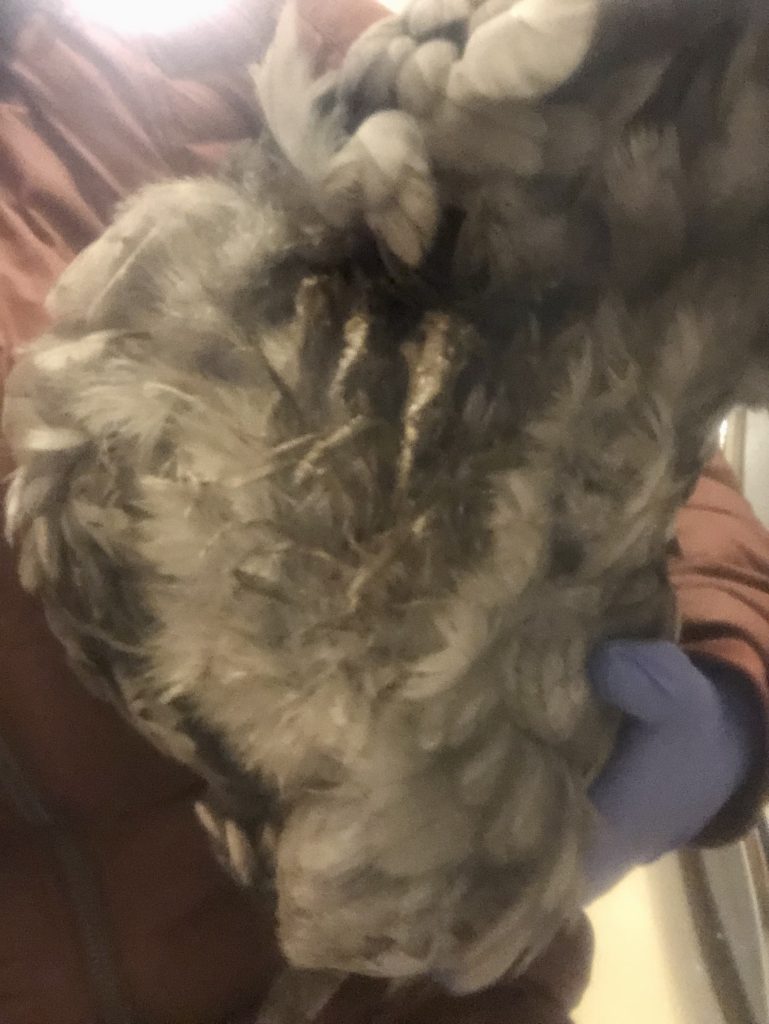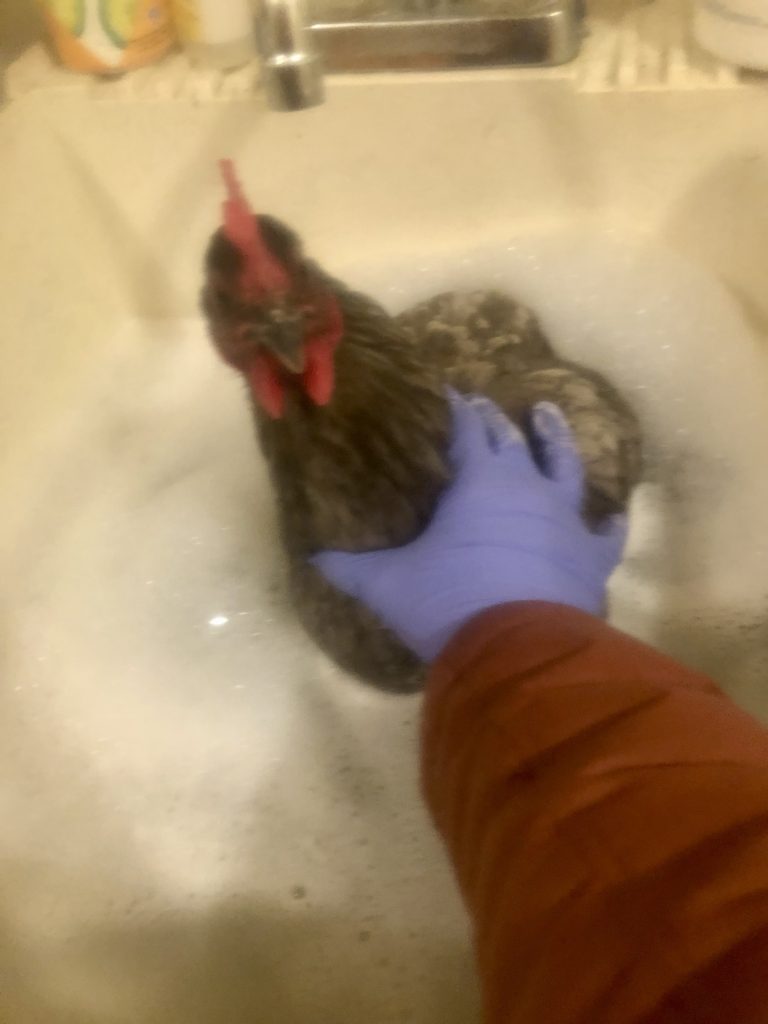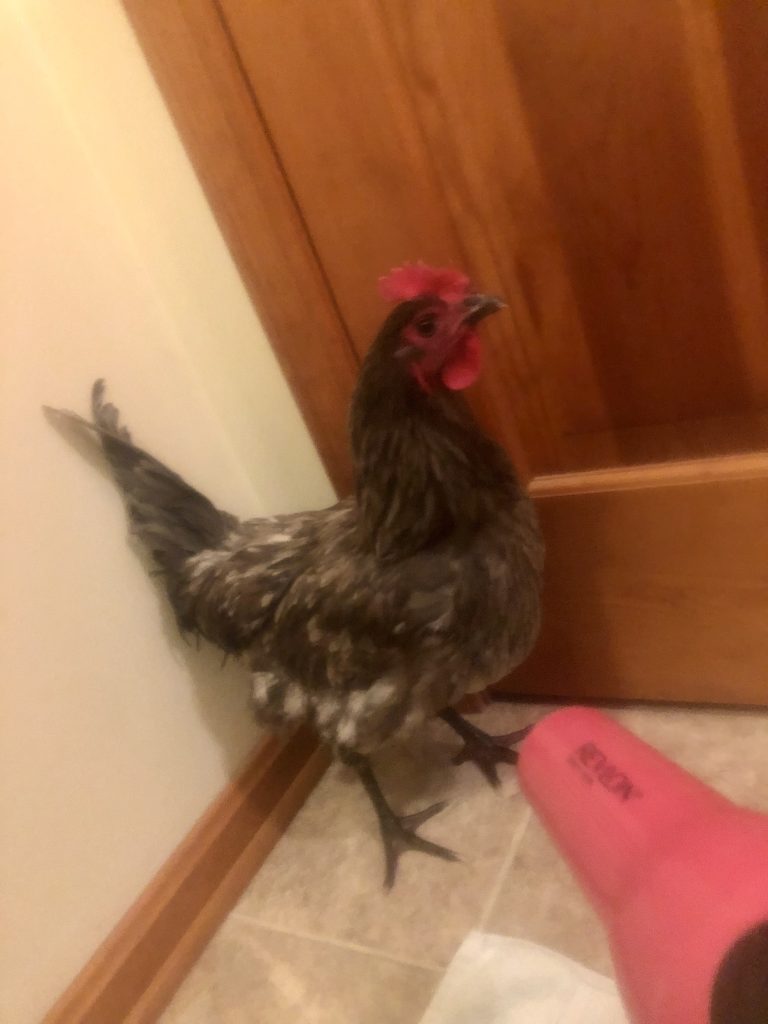After a week and a half of an all-hands-on-deck situation dealing with one illness after another here at Lost Arrow, I got to spend a good length of time out with the chickens cleaning their run and checking on them.
Unfortunately, I did notice that my lavender Orpington appeared to have an issue around her vent (cloaca) area. She was still acting fine and eating well so that was a good sign that it wasn’t *too* far progressed. Upon further inspection, I determined that she has vent gleet.

Vent Gleet is a fungal infection caused by Candida Albicans. The symptoms include dirty, pasty feathers beneath the vent area (more so than just the typical small amount of poo that will sometimes be on their feathers in the area), unpleasant smell, red swollen skin below the vent, and in more severe cases – a firm abdomen.
If it is not very advanced, or if you do not have an avian vet near you that accepts chickens, you can start treatment at home with a few simple steps.

- If you have a way to do so (such as a dog crate), it’s recommended to separate the affected chicken from your flock for treatment as this fungal infection is very contagious, especially if you have a rooster.
- Prepare a soaking tub of warm water. This should not be a bath, just enough to cover the chicken’s vent area for a good soak.
- Wear nitrile gloves and carefully place the chicken into the soak. I gently worked the mess out of her feathers using my gloved hand.
- Once the vent area has been cleaned and soaked for a few minutes, carefully lift the chicken out of the soak and gently dry with a clean towel.
- Because it is still fairly cold here, I chose to use a blow dryer on low to dry the feathers thoroughly.
- Once the chicken is dry, use a gloved hand to apply an over the counter antifungal cream such as miconazole (Monistat) to the vent area and just barely inside of the vent.
- This process will need to be repeated every 48 hours until the chicken is cured.

While the chicken is recovering, it’s extra important to make sure that they have access to clean water, quality food, and no treats. Some treats can throw off the pH balance in the chicken’s digestive tract and worsen the vent gleet.
Keep a close eye on the rest of your flock for any signs of vent gleet and treat them immediately if you notice any symptoms.

